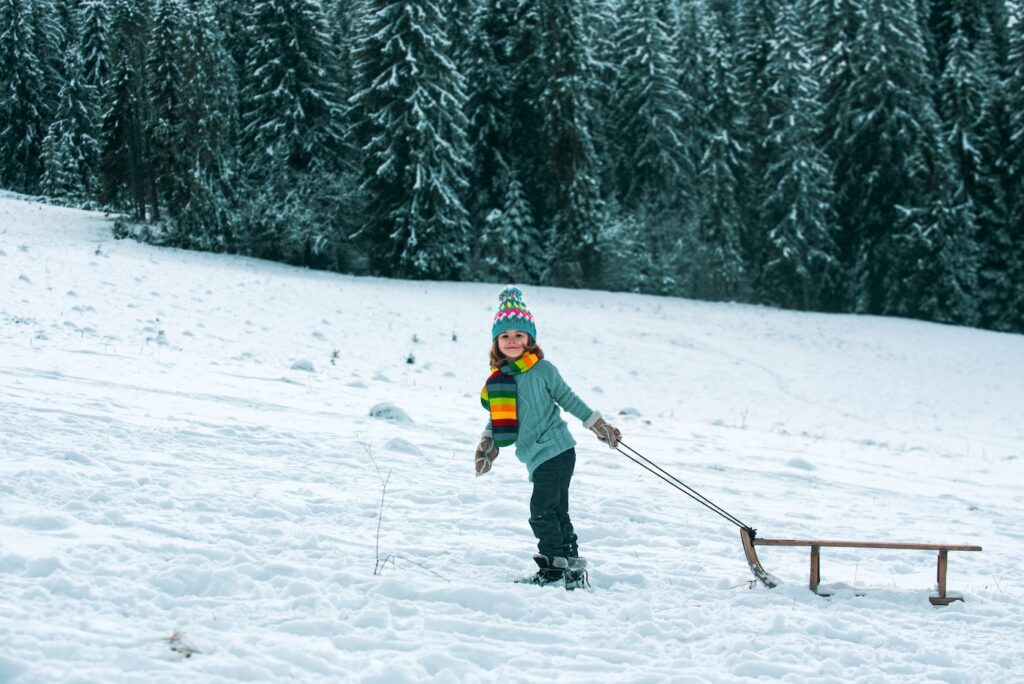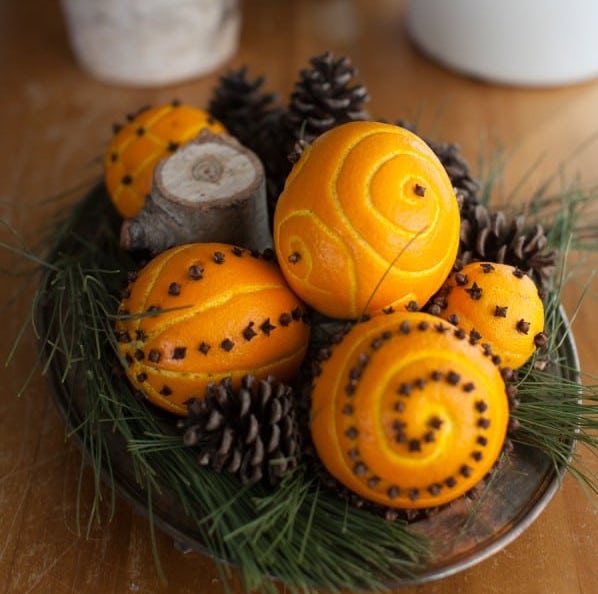Winter Solstice Activities for Kids
Celebrating the Winter Solstice brings a fun and different way to enjoy a cold day with your little ones.
Winter officially begins in the Northern Hemisphere on December 21st at 3:21 am CST. Molly Westerman, PhD, shares these meaningful and creative ways to observe and celebrate the first day of winter with kids.

Winter’s cold and darkness can be mild or intense… the drag of a chilly brown landscape or the drama of very early sunsets and deep snowdrifts.
For many, winter begins to feel endless after a while. But at Winter Solstice – although there’s still plenty of cold weather to face – the balance has shifted. We are moving toward the light.
Winter Solstice Traditions – A Time of Extremes
The word “solstice” brings together two Latin words: sol (sun) and sistere (to stand still). At the winter and summer solstices, the sun as seen from Earth appears to pause in its seasonal motion and then reverse its path.
The winter solstice is the day of the year when the sun seems to rise least high in the sky, following its shortest and lowest arc, and rises and sets at its southernmost point on the horizon.
This is also the shortest day and longest night of the year.
The difference in daytime hours is more noticeable at high latitudes — closer to the North or South Pole, farther from the equator. In Minnesota, the difference between winter and summer solstice is far from subtle: it would be more accurate to say that it hits you over the head.
In the northern hemisphere, our winter solstice occurs around December 21st each year. (In the southern hemisphere, this date marks the summer solstice. June 21st is their winter and our summer solstice.)
In many places and historical times, festivals of light have been observed right around the solstice, this rather dramatic peak of darkness. Winter festivals and personal observances of the solstice often involve these contrasting themes:
- light amidst darkness
- death and rebirth
- turning inward to reflect
- looking forward to new light and warmth
In pagan traditions, this solstice marks the rebirth of the Sun King or Sun God after a journey through the underworld. The northern hemisphere’s winter solstice occurs just days before Christians celebrate the birth of the Son, the light of the world. Saturnalia was an ancient Roman pagan festival dedicated to honoring the sun god Saturn.
Festivals including Hanukkah, Shab-e Yalda, Soyal, Yule, Kwanzaa, and New Year’s Eve also hit upon themes of light, warmth, community, and hope amidst the winter darkness.
Winter Solstice Activities for Kids
With life’s hurried pace, it often feels like we rush through everything. Slowing down and creating new family traditions or observing long-standing rituals can be medicine to the soul. Here are some meaningful activities, books, crafts, and intentional reflections to observe the winter solstice.
Make an edible solstice tree for wildlife
Your yard can be a sanctuary for wildlife – and fun viewing area for kids – this winter. Craft some DIY organic bird feeders or make extra popcorn or or cranberry garlands for your outdoor evergreen trees and decorate them just like your Christmas tree with edible “ornaments” for critters.
Play the “How tall is my shadow?” game
My favorite hands-on activity for understanding the seasons involves a yardstick and a whole year. Around noon on each equinox or solstice (or on the closest sunny day when you’re together), measure from your child’s toe to his or her shadow’s top. Have the child measure your shadow, too, and record the numbers.
After gathering data on all four holidays, you can ask your child to guess which shadow was longest, compare your shadows’ changing heights with your own heights.
When did it come up to your knee?
When was it about as tall as you?
When would it be too tall to stand up in your living room?
Discuss the changing angles of the sun, especially on the shortest day of the year. Read up on our solar system and the Earth’s seasons, and experiment with a flashlight and a globe.
Deck the halls with nature elements
Pine cones, holly leaves or branches, mistletoe, and acorns make warm and cozy additions to centerpieces, candles, and even ornaments. They’re free to source and can be used in dozens of creative ways for nature-inspired decorating.
Embrace winter’s stillness with rest
Ok, so this one isn’t an activity, and there’s a poignant reason why. Winter is nature’s reminder that rest is essential.
The trees stand bare, the ground grows quiet, and many animals retreat into hibernation. It’s a season for slowing down, conserving energy, and preparing for the renewal that comes with spring. Teaching children to embrace this natural rhythm is perhaps the most meaningful way to observe the winter solstice.
In a world that values constant productivity, rest is a lost art. Encourage your child to sleep. Try the meditation in the next section. Setting aside at least one day of the holiday break with zero plans can teach your child that rest is an intentional and regenerative act.
Practice a winter guided meditation together
Turning inside for quiet and reflection is part of the cyclical nature of winter. Reading a guided meditation script like Dancing Snowflakes or this one for Inner Peace is the perfect opportunity to set up a lifelong habit of mindfulness.
This script is all about understanding the impermanence of snowflakes and comparing them to some of life’s more challenging situations.
Read winter-themed books together
These picture books are great family read-alouds for your solstice celebration.
- The Shortest Day: Celebrating the Winter Solstice (Wendy Pfeffer) introduces the science, history, and cultural traditions surrounding the winter solstice. This book also includes projects and recipes to try at home.
- The intricate illustrations of “The Secret Staircase” (Jill Barklem) give life to this sweet midwinter celebration tale. The story can be found in the collection The Complete Brambly Hedge, which also includes a tale for each of the four seasons.
- The Tomten (Astrid Lingren), The Christmas Magic (Lauren Thompson), and Hanna’s Cold Winter (Trish Marx) bring our attention to the magic of winter’s light and darkness, cold and cozy warmth.
- Hershel and the Hanukkah Goblins (Eric Kimmel), Celebrate Hanukkah (Deborah Heiligman), Lucia Morning in Sweden (Ewa Rydåker), Celebrate Christmas (Deborah Heiligman), Too Many Tamales (Gary Soto), and many other excellent picture books explore various cultures’ winter traditions.
Take a moment to reflect on the beautiful words of Joyce Rupp and Macrina Wiederkehr from their book The Circle of Life. This is an abbreviated excerpt of A Celebration of Winter Solstice:
“There is a tendency to want to hurry from autumn to spring, to avoid the long dark days that winter brings. Many people do not like constant days bereft of light and months filled with colder temperatures. They struggle with the bleakness of land and the emptiness of trees. Their eyes and hearts seek color. There is great rejoicing in the thought that light and warmth will soon be filling more and more of each new day.”
“The winter solstice celebrates the return of hope to our land as our planet experiences the first slow turn toward greater daylight. Soon we will welcome the return of the sun and the coming of springtime. As we do so, let us remember and embrace the positive, enriching aspects of winter’s darkness. Pause now to sit in silence in the darkness of this space. Let this space be a safe enclosure of creative gestation for you.”
Learn from snowflakes
Snow and ice are fascinating scientific phenomena, beautiful subjects for art, and important factors in the Earth’s climate and ecology.
The winter solstice is a wonderful time to learn about how water freezes, how our home planet has been shaped by glaciers, why the polar ice caps are melting, and what snowflakes look like up close. Look up “snowflakes under microscope” or check out Kenneth Libbrecht’s gorgeous books.
It’s also a fun opportunity to make paper snowflakes, try to draw the patterns of frost on your windows, make snow people with play dough, or paint a snowy landscape. Those of us who spend the winter surrounded by snow can also get out there and play in it, possibly after reading Ezra Jack Keats’ classic The Snowy Day.
Light a fire or make solstice lanterns
A bonfire, a fire in the hearth, or tons of candles bring light and warmth to your Winter Solstice celebrations. Fire remind us both of humans’ ability to create light in darkness (both literally and metaphorically) and of the sunshine in our not-too-distant future.
Make solstice lanterns from mason jars. Get creative as you decorate the outside and once it dries, add tea lights or candles.
Or, if you’d like to delve deeper into the spirit of the solstice, try learning about and carrying on the rich tradition of the Yule log.
Make fragrant orange pomanders

An old-fashioned craft, orange pomanders were traditionally given to symbolize the returning of the sun and a sweet, happy life. The orange reminds us of the sun, and many citrus fruits ripen in the winter. Here’s a fun tutorial from Simple Bites to make orange pomander balls with oranges and cloves.
Welcome the darkness
My family’s solstice tradition is to turn out the lights in our home, light a few candles on the table, listen to peaceful music, and simply wait for day to turn to night.
At sunset, we drink hot cocoa. The perfect soundtrack for our celebration is Maggie Sansone’s album Ancient Noëls.
Give and serve
Midwinter is a harsh time for many families. One beautiful way to mark the solstice is by participating in local efforts to help those living in poverty, brighten homeless children’s holidays, and work toward social justice. This is a great time to make a plan for your gifts that give back during the holidays.
Look forward, look back
This observance can take place with your family or alone. On paper, out loud, or simply in your thoughts, reflect on these questions or others that suit you better:
- What would you like the coming year to bring?
- Is there anything you hope to leave behind with this winter’s darkness?
- Which lesson or skill – big or small – have you learned this season, that you hope to carry forward with you?
- What lights burn strong in your life, even in darkness?
Watch the Stonehenge livestream event
Most of these activities are screen free, but streaming the Stonehenge Winter Solstice sunrise event should be an exciting way to observe the first day of winter with kids. Each year hundreds of visitors travel to Wiltshire, England to stand amid the stones on this special day. If your family can stay awake, you can watch the winter solstice sunrise over Stonehenge via livestream here starting at 7:25GMT (11:25pm PST).
No matter how you choose to observe the Winter Solstice with your family, make sure you spend at least some time outside. It might be cold, but being in nature in all kinds of weather makes us resilient. Plus cold weather games can be fun and exhilarating.
This article was originally published in 2015 and updated in 2024.


